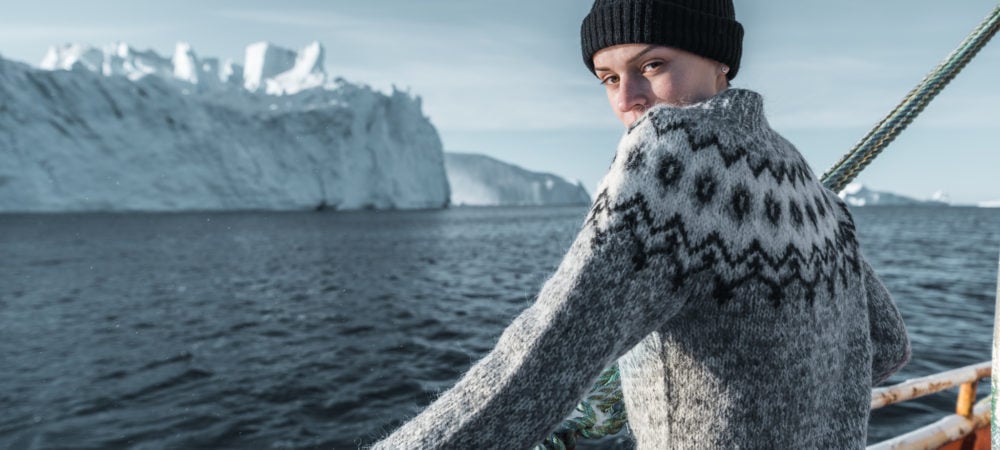Short answer; no, not for the vast majority of people. Wool products have been used for hundreds of years!
Unlike other typical wools produced in other parts of the world, Icelandic wool stands out. This is because the wool dates to as far back as 9th century when the first Icelandic settlers brought along their sheep from Norway. These sheep are a rare breed as they have not been interbred with other breeds (since Iceland is an Island); hence, they retain their original, undiluted, pure, quality.
The wool is distinct from its counterparts from other regions of the world in the sense that it has a combination of TWO unique fibers. The outer layer is tough, long, glossy and naturally water resistant. This layer is what might cause some scratchiness when it´s twisted into strong strings of wool. The second layer, the inner fiber is fluffy, warm and soft and it is the layer that gives protection against any level of cold.
The outer layer from the Icelandic wool is different than wool from sheep living in warmer climates. However, this doesn’t mean that it itches more or itches less than other wool. People have been wearing these products for centuries because they are water repellent and warm too. Wool products might seem itchy, but they are the best against any cold season like winter. For tourists and visitors that have bought and used Icelandic wool clothing, their experience with it has been nothing but warmth, comfort, and coziness.
Do you have an itchy wool sweater?
Sometimes it´s the sheer sight of the sweater, in other cases people are naturally allergic to wool. People with a sensitive skin might experience that wool products in general are somewhat scratchy. Especially children can be sensitive to wool, they may experience some itchiness due to their skin not being as thick and tough as grown-ups. Whatever may be the cause, as their body heat warms the wool up, and with repeated usage, it becomes more cozy and comfortable.
Recommendations when wool is itchy
There are 3 types of Icelandic wool in Icewear´s products, each with a different degree of softness.
- Some of our sweaters here at Icewear are knitted of little processed wool or “plötulopi” and are very soft. Sweater examples: Brynja, Hulda, Edda, Skjöldur and Snorri. These are fantastic sweaters and a safe bet if you´re looking at buying your first sweater.
- Others are made out of “Léttlopi”, which is soft and slightly twisted wool. Sweater examples: Þórdís, Fróðný, Fróði, Elís and Elmar.
- One ply-wool, called “loðband” or “einband” wool, has the least soft touch to the wool. Examples: our knitted blankets and accessories.
How to soften wool that is itching?
Fortunately there are some things you can do, besides giving away that favorite wool sweater of yours. As your body heat warms up the garment, it becomes more comfortable to wear. As an alternative, you can try pre-heating it on a towel rack. Other things you might want to consider is to cover up your skin before wearing a wool item. A long sleeve base-layer shirt or long johns are necessary anyway to stay out in the cold.
Another option would be to buy even finer wool products from Icewear such as items made out of Merino wool or wool-blend products. When you know you have a sensitive skin, this might work for you.
Should you wash the wool when it feels scratchy?
Icelandic wool sweaters actually need rare washing and care. It´s sufficient to hang them outside in the fresh air. When you do want to wash them, you should take into consideration that wool is different from other materials.
Do not wash Icelandic wool products in the washing machine. Rather, use lukewarm water and a special wool soap that contains no perfume or dyes. Soak for 10-15 minutes, and do not wring or rub. Carefully push or squeeze as much water as possible and wrap-dry in a towel. Lay the garment flat out on a towel and pull gently into shape. Do not hang since the weight of the water will stretch it, the best thing is to fold the sleeves across the body of the sweater.
Some claim to have good results softening the feel of the wool by using vinegar or shampoo and hair conditioner. We would recommend to purchase special Icelandic wool soap from our stores and follow the instructions on the bottle.
For more information, please see our washing instructions and recommendations.









